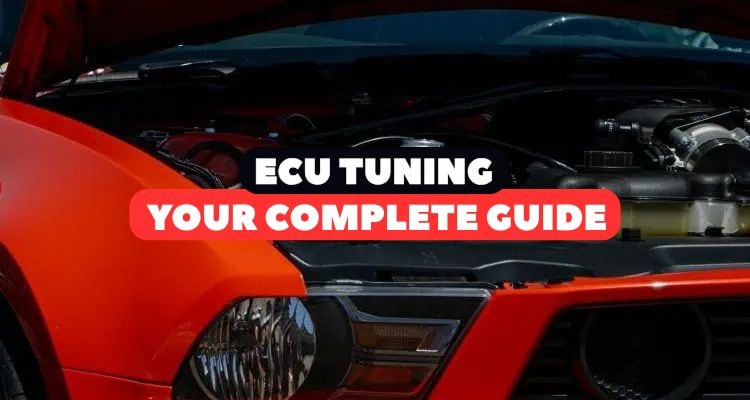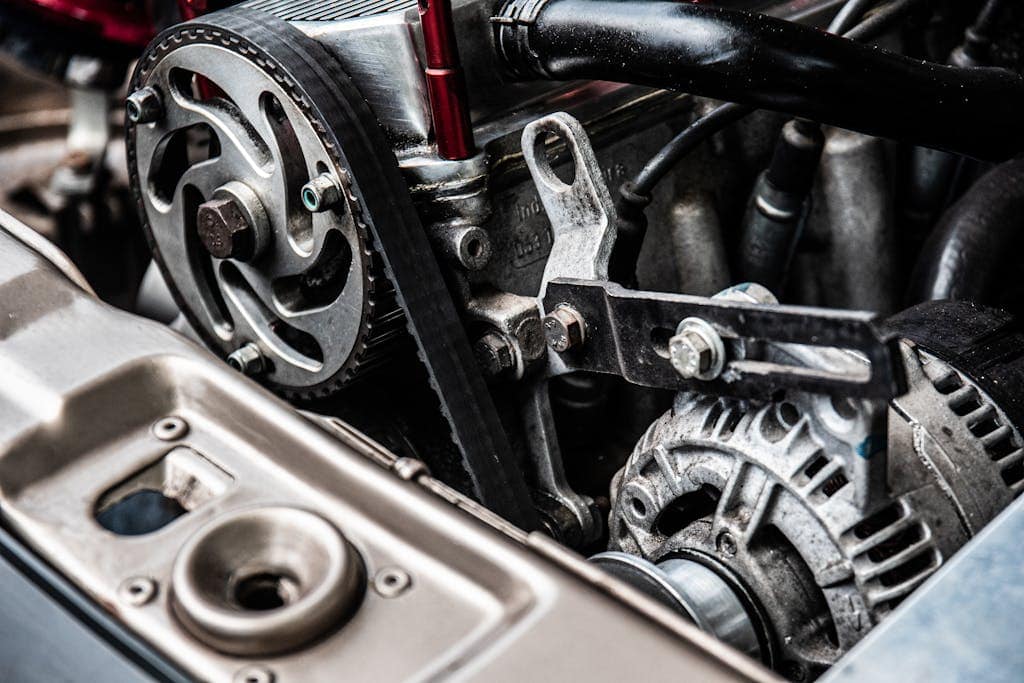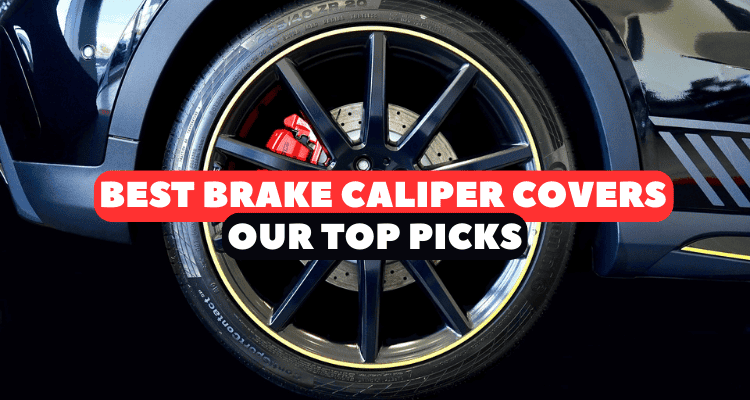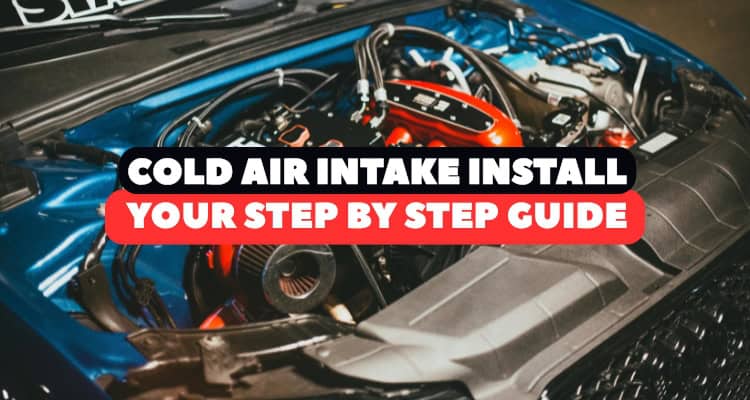ECU Tuning for Beginners: What It Is, How It Works, and Is It Worth It?
Some of the links in this article are "affiliate links", a link with a special tracking code. This means if you click on an affiliate link and purchase the item, we will receive an affiliate commission.
The price of the item is the same whether it is an affiliate link or not. Regardless, we only recommend products or services we believe will add value to our readers.
By using the affiliate links, you are helping support our Website, and we genuinely appreciate your support.
For many gearheads, stock is never good enough. One modification that attracts particular attention is ECU tuning, which can increase horsepower or improve throttle response. But what is ECU tuning, and is it right for every project? Keep reading as we explore the answers.

What Is ECU Tuning?
ECU tuning for beginners starts with a look at the basics. The ECU, or engine control unit, is your car’s brain or main computer. This sophisticated system controls fuel injection, air-fuel ratios, ignition timing, and many other functions. Modifying the ECU’s software enables you to optimize performance to match your driving preferences, not the middle-of-the-road standards determined by the automaker’s engineers. The ECU gathers sensor data throughout the car and adjusts engine function to maintain peak operation. ECU tuning works by reprogramming this computer with revised software that unlocks performance left untapped by the original configuration.
Why Enthusiasts Tune Their Cars
There are many motivations for engine tuning, but the benefits often involve:
- Increased Power: Remapping turbocharged engines can lead to noticeable output gains that boost horsepower and torque with no change in hardware.
- Improved Throttle Response: Tuning can refine throttle performance
- Remove Factory Restrictions: Automakers must balance performance with regulatory compliance; software modifications can overcome these restrictions.
- Better Fuel Economy: While not always a priority, improved fuel efficiency can be a byproduct of ECU tuning.

3 Key Things to Consider Before ECU Tuning
#1: Warranty Impact
ECU tuning can void warranty coverage under certain circumstances. If the automaker or dealer determines that reprogramming is the cause of a malfunction, then a related warranty claim can be denied. In the U.S., the Magnuson-Moss Act limits the extent of any denial. For example, just because ECU tuning might have caused engine problems, the warranty is still valid for unrelated areas like the suspension or air conditioning.
One way around warranty concerns is to take advantage of OEM ECU tuning installed by a dealer. For instance, Ford and Toyota have tuning programs. The trade-offs are less robust performance upgrades and higher costs than aftermarket options.
#2: Wondering Is ECU Tuning Safe for My Car?
ECU tuning can be safe for daily driving when using software from a reputable company and, as applicable, installing it by a professional. The key to avoiding issues is not stressing the engine’s capabilities. Just because you can boost horsepower by 40% doesn’t mean you should. The most significant risk comes from poor-quality tunes or inexperienced tuners. Would you install an unknown or untested app on your phone? Think the same with ECU tuning.
#3: Required Supporting Modifications
It’s easy to focus on the tuning process while ignoring the other vehicle updates needed to safely implement the changes. The more intensive the reprogramming, the more elaborate the supporting requirements. Here’s a simple version of ECU remapping explained:
- Stage 1: ECU remapping only with minimal supporting mods (air filter, exhaust)—20-40% power gains, still emissions-legal
- Stage 2: ECU remapping plus mechanical upgrades (downpipes, intercooler, intake)—30-50% power gains, requires supporting hardware
- Stage 3: ECU remapping along with extensive engine modifications (turbo upgrades, internals, fuel system)—50-70% power gains, motorsport/track-focused builds
For Stage 1 tuning, most vehicles need minimal modifications: a high-flow air filter, premium fuel (91+ octane), and proper maintenance. More aggressive Stage 2 and 3 tunes require upgraded fuel systems, better intercooling, and exhaust improvements. The brakes and suspension may also need enhancing.
It’s important to ensure you have the right tools before diving into any car mod. Refer to this article before you get started. 10 Essential Tools Every Beginner Needs to Start Modding Cars

Different Tuning Methods
Determining the best approach to ECU tuning comes down to your budget, risk tolerance, and performance requirements.
Off-the-Shelf Flash Tunes:
- Pros: Affordable ($200-$800), easy installation, reversible
- Cons: Generic maps, limited customization, may not extract the maximum potential
Custom Dyno Tunes:
- Pros: Completely customized, real-time optimization, maximum power potential
- Cons: Most expensive ($1,000+), time-intensive, requires local expertise
Here’s how to break down the flash tune vs dyno tune debate: Flash tuning is more generic. It will work with your car but may not be optimized for your driving style and performance needs. In contrast, dyno tuning screams personalization, enabling tweaks for your specific vehicle, environment settings (climate, elevation), fuel, hardware modifications, and other elements.
Piggyback ECU Tuning Systems
Another ECU tuning option is a piggyback system. This setup involves a stand-alone device that intercepts and modifies the original sensor data before the information is sent to the stock ECU. In effect, this fools the ECU into responding in ways that boost performance (such as increased turbocharger output).
- Pros: Less invasive, easier to remove, may be harder to detect
- Cons: Limited capabilities, potential conflicts, more expensive than handhelds
Throttle Controllers vs ECU Tuning
This beginner ECU tuning guide wouldn’t be complete without explaining a throttle controller. While it often gets confused with ECU tuning, a throttle controller is quite different. It’s an electronic device that links the accelerator pedal and the ECU to better manage signal exchange, reducing pedal lag and improving throttle responsiveness. While an ECU tune involves software remapping, a throttle controller doesn’t make any changes to this core software. All it does is adjust the signal to enable a faster-acting throttle. There are no power gains and no warranty worries. A good quality throttle controller unit, which usually includes customization features, costs $200 to $400.
FAQ: ECU Tuning for Beginners
Q: Can owners tune cars themselves?
A: While there are DIY tuning options, it’s generally not advised, especially for novices. A quality tune requires professional experience to avoid potential damage and warranty issues.
Q: How much power can be gained?
A: A Stage 1 tune can boost horsepower by as much as 40% in a turbocharged engine. The same work to a naturally aspirated powerplant can typically yield a 5-15% improvement.
Q: Will an ECU tune improve fuel economy?
A: It depends on the type of remapping. A conservative tune may help at the pump, but performance tunes usually reduce fuel economy.
Q: Can an ECU-tuned car be returned to stock?
A: Yes, an ECU tune can generally be reversed, but flash counters and digital logs may still show that the ECU was modified.






